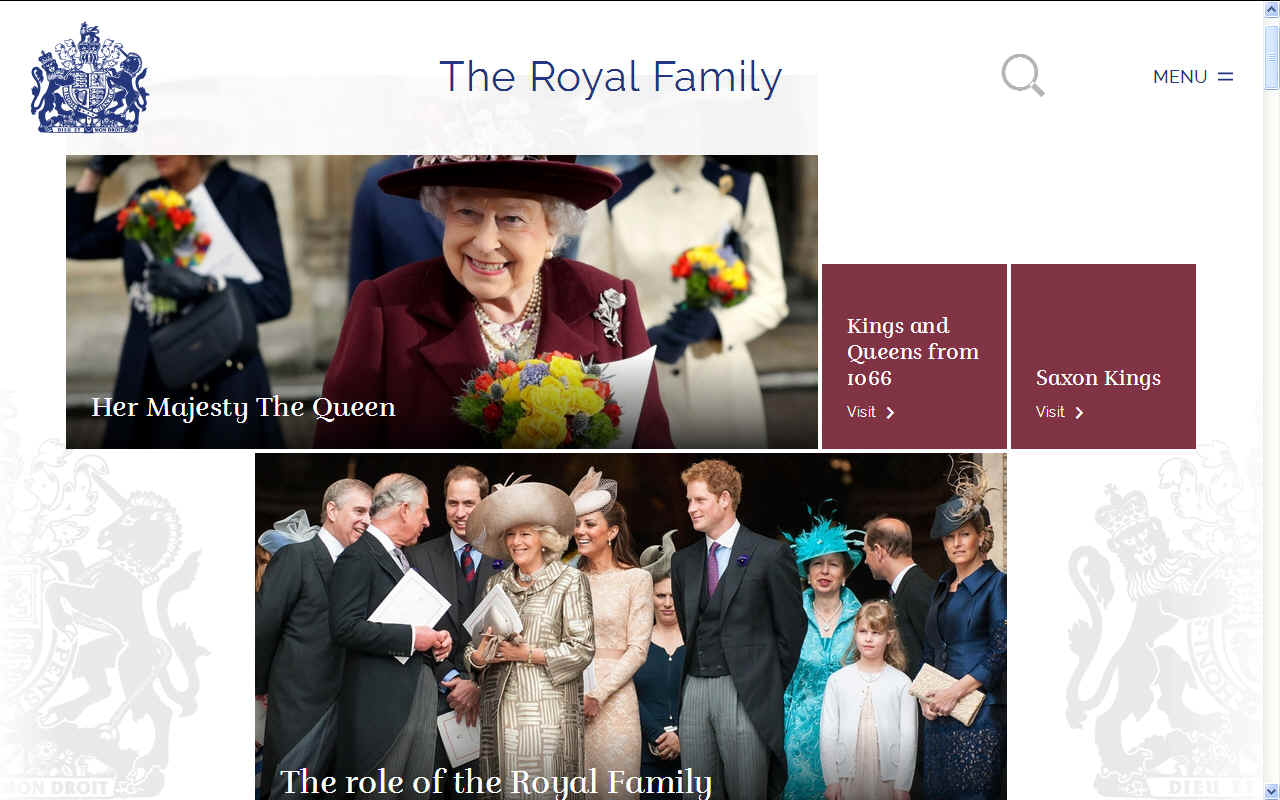
ABOUT
THE ROYAL FAMILY
The King or Queen of England is responsible for appointing a
Government
that will provide an effective administration for her subjects. This is
a difficult task as you might imagine with so many factors to take into
account, such as vested interests that conflict with what might
otherwise be the efficient running of Britain.
One
of the main problems within the United kingdom is the institutionalised
corruption that is widespread in the police and councils as reported on
many websites and in the newspapers. The problem is so ingrained that we
wonder if Her Majesty and her children simply tolerate the present level
of malfeasance, despite the fact that such crimes carry a maximum
life
sentence.
The
Royal family is replenishing each year, slowly bringing fresh perspectives to
the table. We hope eventually, that new blood will bring with it the
will to mould the United
Kingdom into a bastion of fair play and transparency that is a
prerequisite for justice and world
peace, to repair any leaks in an imperfect
system.
British
royals are not alone in this regard, with other world
rulers also struggling to eradicate corruption.

ROYALS
GALLERY 2018
|
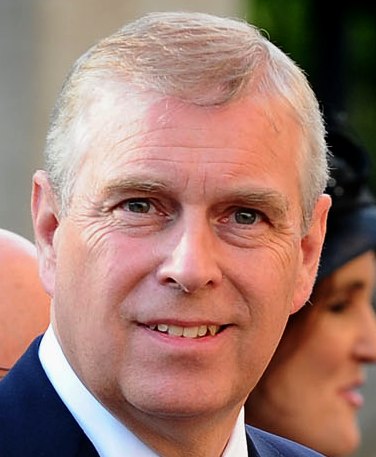
Andrew
Duke of York
|
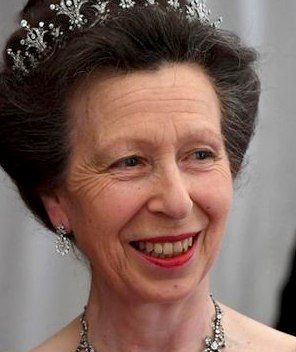
Anne
Princess Royal
|
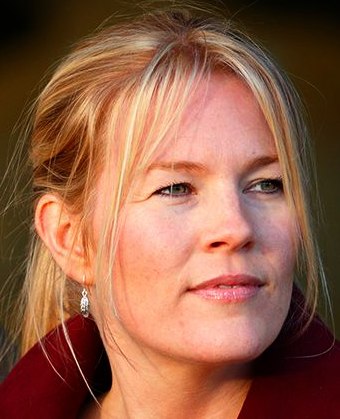
Autumn
Phillips
|
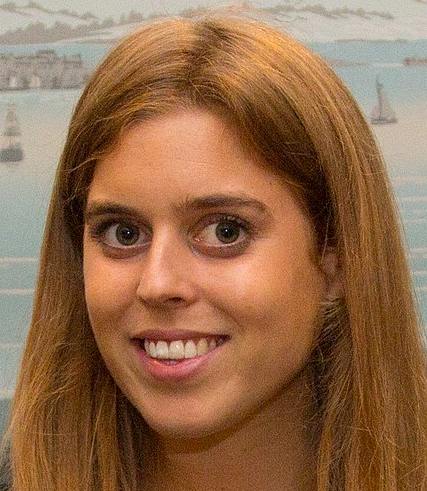
Beatrice
of York
|
|
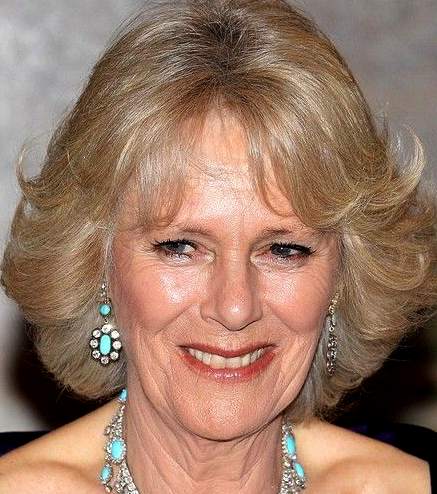
Camilla
Duchess Cornwall
|
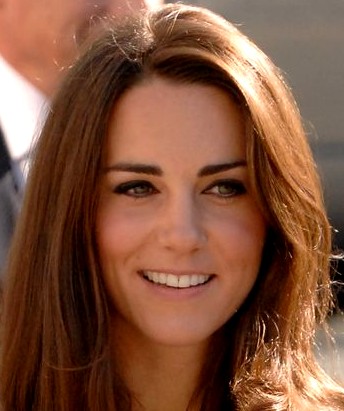
Catherine
Duchess Cambridge
|
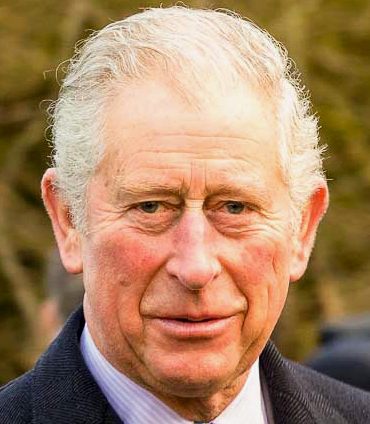
King
Charles III
|
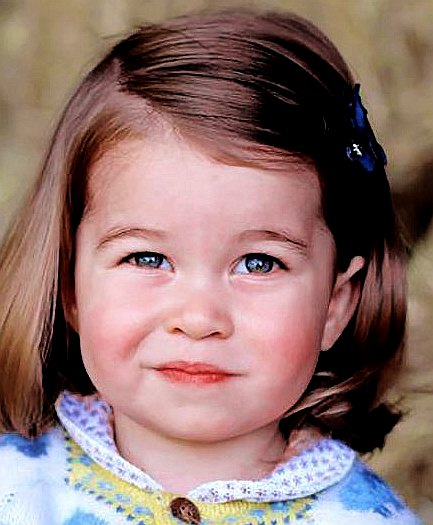
Charlotte
of Cambridge
|
|
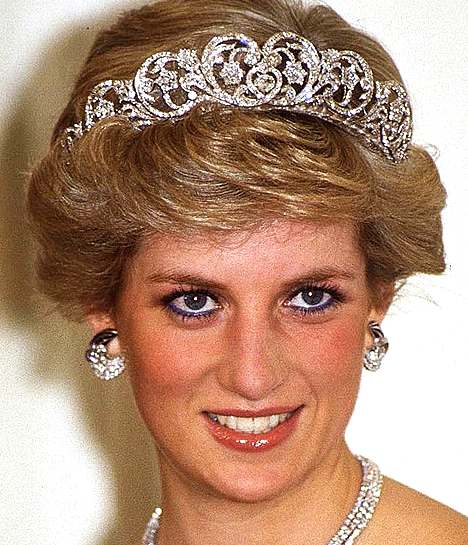
Dianna
Princess Wales
|
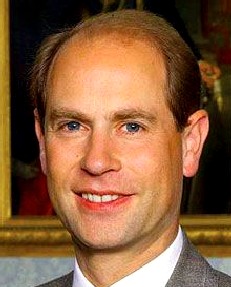
Edward
Earl Essex
|
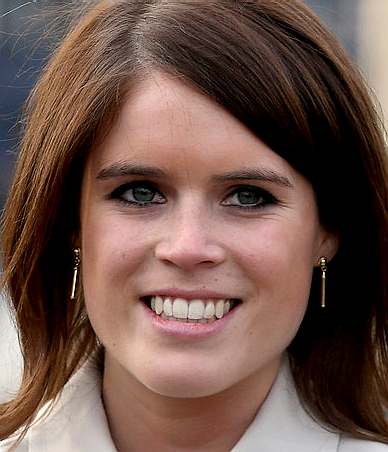
Eugenie
of York
|
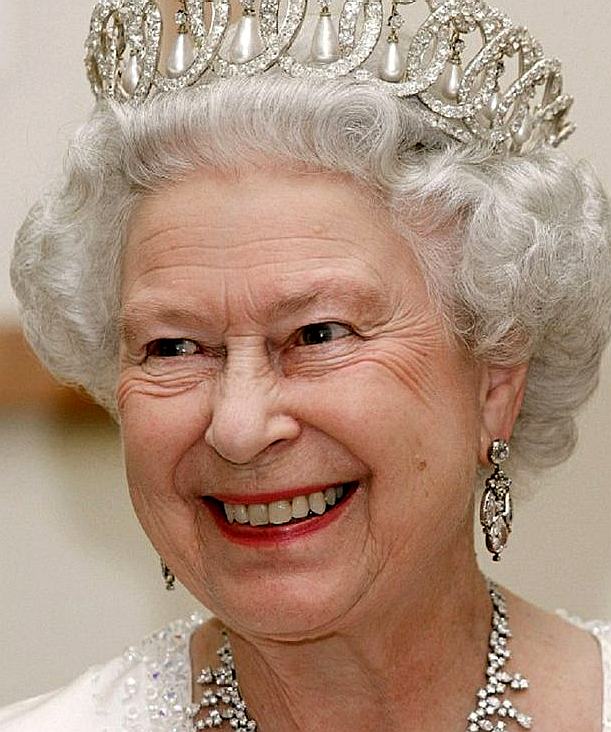
Elizabeth
Majesty Queen
|
|
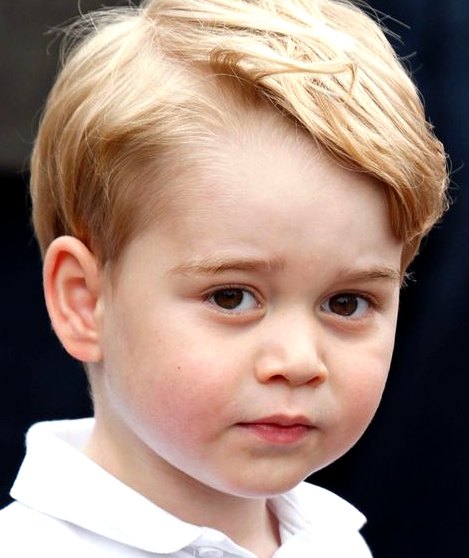
George
of Cambridge
|
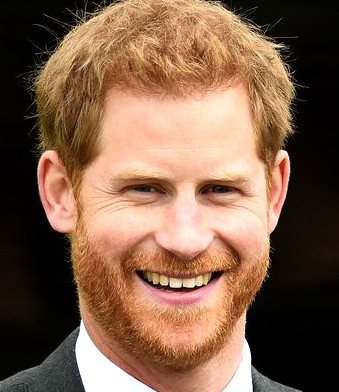
Harry
Duke Sussex
|
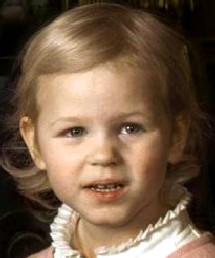
Isla
Phillips
|
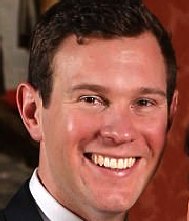
Jack
Brooksbank
|
|
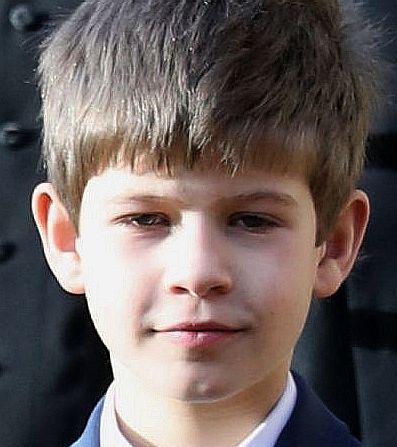
James
Viscount Severn
|
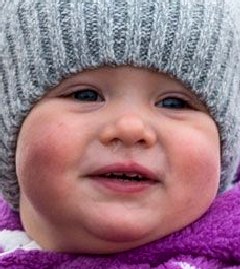
Lena
Tindall
|
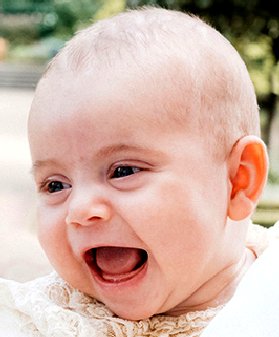
Louis
of Cambridge
|
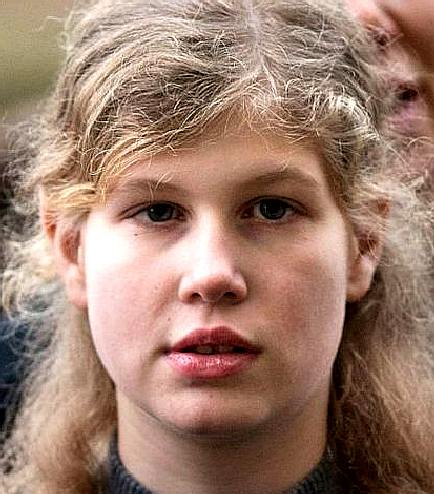
Louise
Lady Windsor
|
|
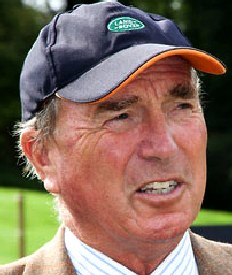
Mark
Captain Phillips
|
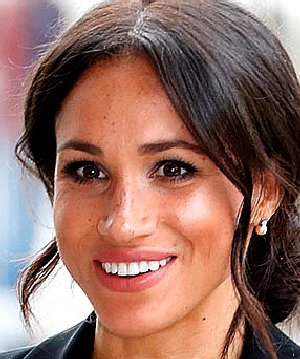
Meghan
Duchess Sussex
|
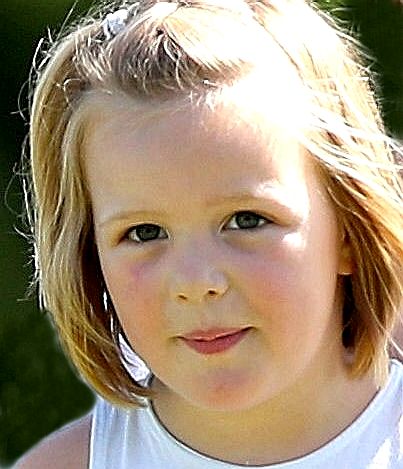
Mia
Grace Tindall
|
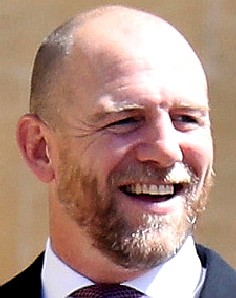
Mike
Tindall
|
|
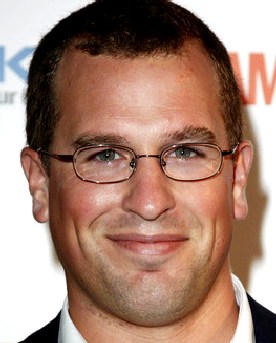
Peter
Phillips
|
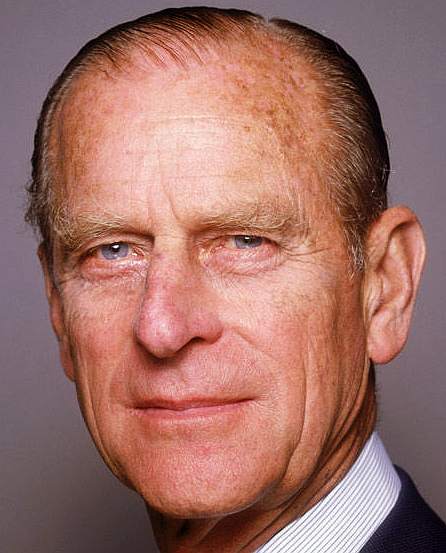
Philip
Duke Edinburgh
|
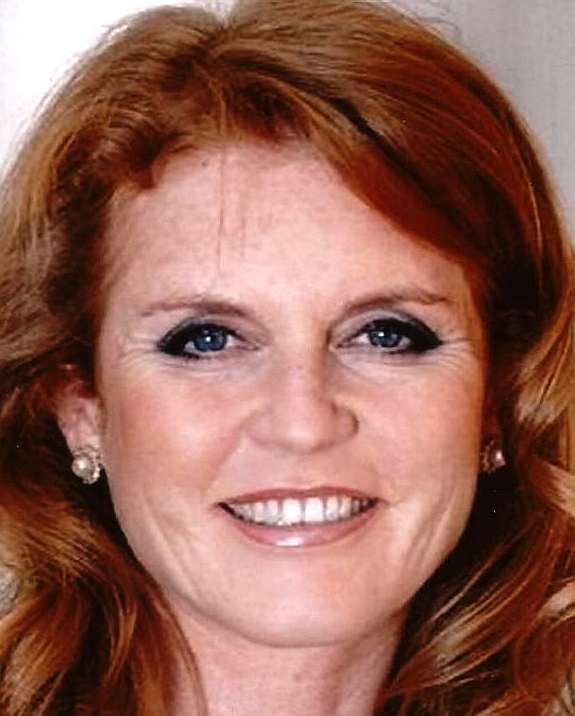
Sarah
Duchess York
|
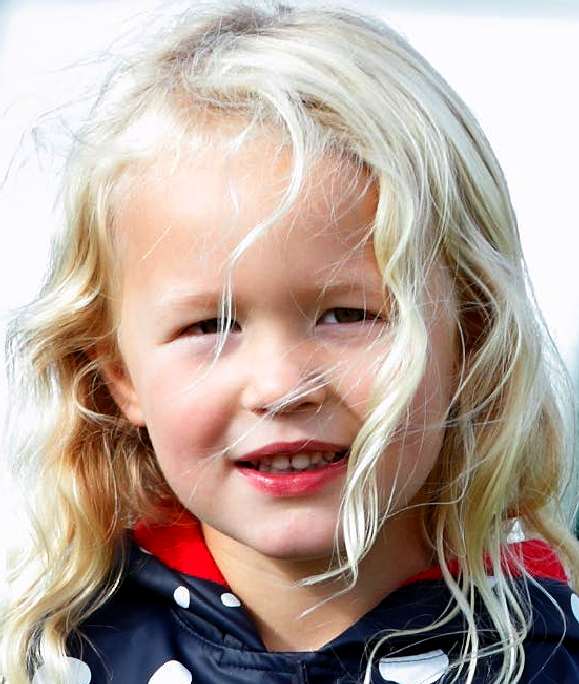
MP
Savannah
Phillips
|
|
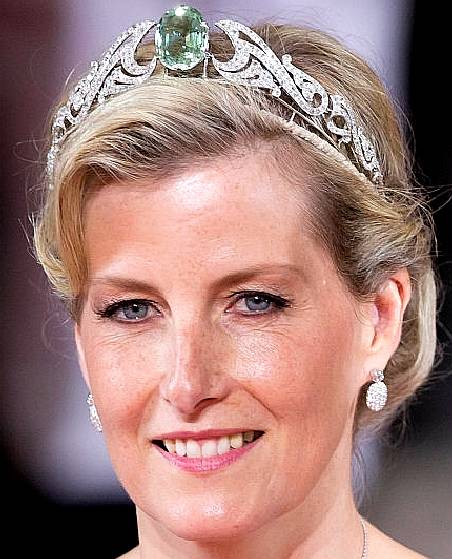
Sophie
Countess Wessex
|
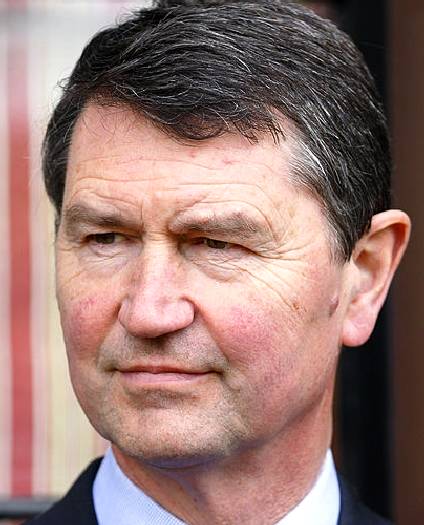
Timothy
Laurence V. Admiral
|
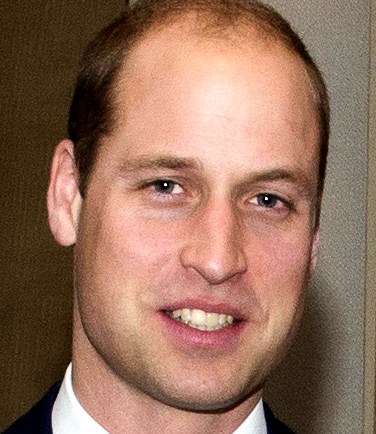
William
Duke Cambridge
|
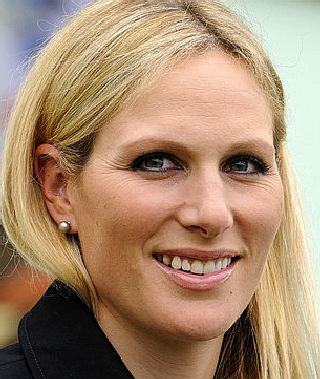
Zara
Tindall
|

GUARDIAN
EXTINCTION CRISIS NOV
2018 -
How to push green issues up the political agenda is a question that has exercised environmentalists for decades. Do dark warnings about the world that awaits us if we do not curtail carbon emissions and protect forests and oceans motivate people to act, or scare them off? Are apocalyptic visions such as that in Cormac McCarthy’s novel The Road what we need to open our minds, or an inducement to give up trying?
Opinion is divided, as events of the past week have illustrated. In advance of his latest wildlife television series, Dynasties,
David Attenborough said at the weekend that too many warnings about endangered species are a “real turn-off”. A few days earlier, the activist group Extinction Rebellion launched a campaign of civil disobedience by demanding a zero-carbon economy by 2025. Writing in advance of a protest in London that saw 15 people arrested, Green MEP Molly Scott Cato said she and others have been driven to break the law after spending years ringing alarm bells and being ignored.
Influenced by thinkers including Charles Eisenstein and Erica Chenoweth, whose ideas about peaceful protest have also been taken up by opponents of
President
Trump, and with a commitment to grassroots organising that is similar to 350.org (the anti-fossil-fuel organisation launched in the US by Bill McKibben in 2007), Extinction Rebellion aims to foment a mass movement that will change history. Elected politicians, goes the argument, have failed, as have businesses and other organisations including environmental charities.
Carbon emissions and biodiversity loss are out of control. The “unimaginable horrors” of unchecked
warming and habitat destruction mean more radical tactics are called for – and morally justified by the dangers, in the eyes of protesters.
While the current focus on the extinction crisis is novel, and a contrast to more familiar warnings about emissions, the notion that environmental activism encompasses lawbreaking is not new. The
Green party of England and Wales approves of civil disobedience in the statement of underlying principles known as its “philosophical basis”.
Greenpeace has engaged in nonviolent direct action alongside the traditional NGO tools of lobbying and petitions since the 1970s. Activists have used occupations and blockades as techniques in protests against road-building, airports and coal-fired power stations. They have also mounted protests against sponsorship by oil companies in museums. Most recently, attempts to frack in Lancashire have been disrupted by protesters, three of whom were freed from prison last month after successfully appealing against sentences that judges found to be “manifestly excessive”.
The heightened language of emergency and breakdown employed by this new grouping will not appeal to everyone. Nor is it intended to. It is rational to be sceptical about whether the protesters will achieve their aims. But on the basis of the most recent warnings about rising temperatures and species decline, and chancellor
Philip
Hammond’s failure to mention climate change at all in last week’s budget, it is not rational to deny that they are justified in rebelling against the government’s inaction. Their sense of urgency is welcome.
A
TO Z OF ROYAL FAMILY MEMBERS 2018
Andrew Duke of York,
Prince
Anne Princess Royal
Autumn Phillips
Beatrice of
York,
Princess
Catherine Duchess of Cambridge
Charlotte of
Cambridge,
Princess
Edward Earl of
Wessex,
Prince
Elizabeth
Queen II Windsor
Eugenie of
York,
Princess
Camilla Duchess of Cornwall
Charles Prince of Wales
Dianna Princess of Wales
George of
Cambridge,
Prince
Harry Duke of Sussex
Isla Phillips
Jack Brooksbank
James Viscount Severn
Lena Elizabeth Tindall
Louis of
Cambridge,
Prince
Louise Windsor,
Lady
Mark
Captain Phillips
Meghan Duchess of Sussex
Mia Grace Tindall
Mike Tindall
Peter Phillips
Philip Duke of Edinburgh
Sarah Duchess of York
Savannah Phillips
Sophie Countess of Wessex
Timothy Laurence
Vice Admiral
William Duke of Cambridge, Prince
Zara Tindall
SUCCESSION
TO THE BRITISH THRONE
Succession to the British throne is determined by descent,
sex (for people born before October 2011), legitimacy, and religion. Under common law, the Crown is inherited by a sovereign's children or by a childless sovereign's nearest collateral line. The Bill of Rights 1689 and the Act of Settlement 1701 restrict succession to the throne to the legitimate Protestant descendants of Sophia of Hanover that are in "communion with the Church of England". Spouses of Roman Catholics were disqualified from 1689 until the law was amended in 2015. Protestant descendants of those excluded for being Roman Catholics are eligible.
Queen Elizabeth II is the sovereign, and her heir apparent is her eldest son, Charles, Prince of Wales. Next in line after him is
Prince
William, Duke of Cambridge, the Prince of Wales's elder son. Third in line is Prince George, the eldest child of the Duke of Cambridge, followed by his sister, Princess Charlotte and younger brother, Prince Louis. Sixth in line is Prince Harry, Duke of Sussex, the younger son of the Prince of Wales. Under the Perth Agreement, which came into effect in 2015, only the first six in line of succession require the sovereign's consent before they marry; without such consent, they and their children would be disqualified from succession.
The first four individuals in the line of succession who are over 21, and the sovereign's consort, may be appointed Counsellors of State. Counsellors of State perform some of the sovereign's duties in the United Kingdom while he or she is out of the country or temporarily incapacitated. Otherwise, individuals in the line of succession need not have specific legal or official roles.
The United Kingdom is one of the 16 Commonwealth realms. Each of those countries has the same person as monarch and the same order of succession. In 2011, the prime ministers of the realms agreed unanimously to adopt a common approach to amending the rules on the succession to their respective Crowns so that absolute primogeniture would apply for persons born after the date of the agreement, instead of male-preference primogeniture, and the ban on
marriages to Roman Catholics would be lifted, but the monarch would still need to be in communion with the Church of England. After the necessary legislation had been enacted in accordance with each realm's constitution, the changes took effect on 26 March 2015.

WIKIPEDIA
LISTINGS
King
George V (1865–1936)
This
is a list of members of the royal family as of 2018:
Family
members not using a royal style
There
are a few immediate family members (a spouse and the children
and grandchildren of its current full or deceased members) using
no royal style who sometimes appear in listings:
|
UNITED
NATIONS & UNITED KINGDOM
The
United Kingdom is a member of the United Nations and a signatory to the
Universal Declaration of Human Rights. As such Britain is bound to
secure, or attempt to aspire to sustainability development goals below
such as eliminating discrimination,
working towards justice for all and eliminating hunger and poverty.
This is likely to mean providing affordable housing and a reduction in
financial slavery brought about by the present renting society. We also
need good services
and cheap energy for a truly circular economy:
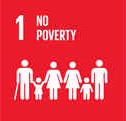
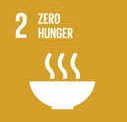


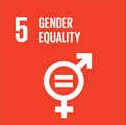
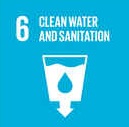
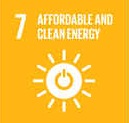
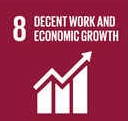
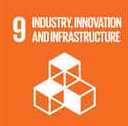
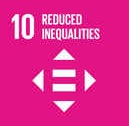
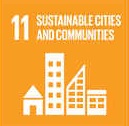
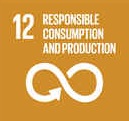
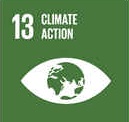
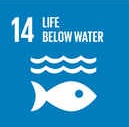
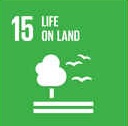
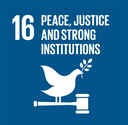
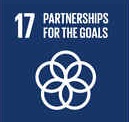
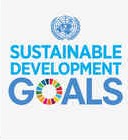

A
TO Z OF ROYAL WEDDINGS
A is for ANNOUNCEMENT. A proclamation will be displayed on an easel at the gates of Buckingham Palace, while news of the birth will be tweeted by Kensington Palace and emailed to the press. Gun salutes will also mark the new arrival.
B is for BROTHER. The new royal baby will be 21 months younger than older brother Prince George, who is directly in line to become king one day.
C is for CHRISTENING. The baby will be baptised wearing a replica of a lace and satin gown that has been used since 1841. Tradition dictates the Archbishop of Canterbury Justin Welby, England's highest cleric, will conduct the christening.
D is for DUTY. Once an adult, a lifetime of royal duty on behalf of the sovereign awaits.
E is for EDUCATION. The royal youngster is set to enjoy exclusive schooling. Both William and his brother Prince Harry went to the elite boarding school Eton.
F is for FASHION. The new royal will be a trendsetter before it can walk and talk anything George has been seen wearing has flown off the shelves.
G is for GRANDPARENTS. William's father Prince Charles, the heir to the throne, and his wife Camilla are expected to visit the baby in hospital shortly after the birth, along with Kate's parents Michael and Carole Middleton.
H is for HOME. The new baby will grow up at the Cambridges' apartment in London's Kensington Palace and Anmer Hall, a country house on Queen Elizabeth II's private Sandringham estate in eastern England.
I is for INTEREST. The birth will spark huge interest around the world, with international media camped outside the hospital doors waiting for the first glimpse of the new royal.
J is for JORDAN. The baby will be baptised with water from the River Jordan.
K is for KATE. The 33-year-old duchess suffered acute morning sickness again during her second pregnancy, causing her to miss royal engagements.
L is for LINE OF SUCCESSION. The baby will be born fourth in line to inherit the throne, behind George and directly in front of uncle Harry.
M for MEMORABILIA. The Centre for Retail Research reckons the royal baby will bring retail sales of around £60 million to £70 million ($88-103 million, 84-98 million
euros), rather than the £247 million boost attributed to George.
N is for NAMES. Royal babies often get several Christian names, with George getting three. Bookmakers' favourites for a girl are Alice, Elizabeth, Charlotte, Alexandra and Victoria; for a boy, James, Arthur, Henry, Philip and Albert.
O is for OBSTETRICIANS. The medical team will be led by Guy Thorpe-Beeston, the surgeon-gynaecologist to the royal household, who will be assisted by his predecessor Alan Farthing.
P for PRIMOGENITURE. Laws which took effect in March ending male primogeniture mean girls born after October 28, 2011 can no longer be overtaken by younger brothers in the line of succession.
Q is for QUEEN ELIZABETH II. The baby will be the monarch's fifth great-grand-child and her 17th descendant.
R is for ROYAL MINT. They will produce a £5 coin in celebration and gift a special "lucky" silver penny to 2,015 babies born on the same day.
S is for ST MARY'S HOSPITAL. The baby will be born in the private Lindo Wing of the hospital in Paddington, central London. A two-room suite costs £6,750 a night, though consultants' fees can double that.
T is for TITLE. The baby will be known as His/Her Royal Highness Prince/Princess (name) of Cambridge.
U is for UNCLE HARRY. William's fun-loving brother is coming out of the army and so may have more time to babysit. The baby will also have Auntie Pippa and Uncle James on its mother's side.
V is for VICTORIA. The baby will be the great-great-great-great-great-grandchild of 19th-century queen Victoria.
W is for WILLIAM. The 32-year-old duke is training to become an air ambulance pilot. He will take two weeks' paternity leave. He could face a two-hour drive to London when Kate goes into labour.
X is for XX or XY? As with George, the couple do not know the sex of the baby.
Y is for YELLOW. Bookmakers are taking bets on the colour of Kate's dress when she leaves hospital, with a spring-like yellow among the favourites for the first baby pictures that will zip round the world.
Z is for ZZZ William and Kate can expect months of sleepless nights, but their nanny will be on hand to ease the burden.

A
TO Z OF ROYAL NAMES
A: ALEXANDER, Defender of the people. The feminine version, Alexandra, is the Queen's middle name. In 2013 William and Kate gave their son George this middle name in tribute to her.
B: BRICE, From the town of Bruis. This is the family name of famed Scottish king Robert, who led the country to independence from England in 1320.
C: CHARLES, Freeman. Strong Prince Charles shares a moniker with Charles II (1630-1685), who came to power when the monarchy was restored in
1660, and Charles
I, who was executed when the monarchy was abolished. Also Prince Harry's second name.
D: DAVID, Beloved. In something of a royal tradition, King Edward VIII (later Duke of Windsor) was known informally as David, the last of his seven names. Prince Harry's fourth name.
E: EDWARD, Noble strength. King Edward I's (1239 – 1307) campaign to bring Scotland under English control is the subject of the film Braveheart.
F: FREDERICK, Peaceful ruler. Always a favourite with royals, the name had a surge in popularity in the 18th century when the German House of Hanover claimed the throne.
G: GEORGE, Farmer. Prince George shares his name with the Queen's beloved father, George VI, who saw Great Britain through the Second World War.
George
I - South Sea Bubble
MORE: The meaning behind Prince Louis Arthur Charles
H: HENRY, Ruler of the estate. He's known to the world as Prince Harry, but the rugged young royal's first name is actually Henry – one of the most-storied royal names.
I: INDULF, Wolf. This unusual moniker is the English version of the medieval Gaelic name "Ildulb." Indulf mac Causantin (d. 962) was king of the Scots
J: JAMES, Supplanting. The 21st-most-popular boy's name in the UK last year, James is also the name of many British kings.
James
II
K: KENNETH, Fire. King Kenneth MacAlpin is considered by some to be the founding father of Scotland in the ninth century.
L: LOUIS, Famed warrior. Prince William and Prince George both have this as a middle name. It was likely chosen to honour Prince Philip's uncle, Lord Louis Mountbatten.
M: MICHAEL, Who is like God. The name of the Queen's cousin Prince Michael of Kent.
N: NICHOLAS, Victory of the people. The Duke of Kent's son Lord Nicholas Windsor, now in his 40s, shares a name with the saint who is believed to protect sailors.
O: OCTAVIUS, Eighth. Royal families would give this name to the eighth child (or eighth boy), as with Prince Octavius (1779-1783), eighth son of King George III.
P: PHILIP, Fond of horses Prince Charles paid tribute to his father, Prince Philip, when naming his first-born. Philip is one of Prince William's middle names.
Q: QUINCY, Estate of the fifth son. Derived from the Latin word "quintus," this was the name of rebel leader Saer de Quincy, 1st Earl of Winchester (1155-1219).
R: RICHARD, Brave power. King Richard III (1452-1485) may have gotten a bad rap from Shakespeare, but this name has never gone out of style.
S: STEPHEN, Crown. A fitting choice for a royal, Stephen wasn't always a proper name; it was used as a noun in Homer's ancient Greek epic The Illiad.
T: THOMAS, Twin. Thomas Becket (1120-1170), the Archbishop of Canterbury, had disputes with King Henry II and was killed by his men.
U: UNREADY, Bad counsel. Ethelred the Unready (968-1016) was just seven years old when he took the throne, hence he became known as the "unready" ruler.
V: VICTOR, Champion. Despite its martial meaning, this name is more famous for its association with saints and religious figures than warriors.
W: WILLIAM, Determined protector. After his brother Prince William, who will one day become King.
Prince William, whose full name is William Arthur Philip Louis, and his son Prince George, whose full name is George Alexander Louis
X: XAVIER, New house. St. Francis Xavier (1506-1552) was one of the first Jesuit missionaries and devoted his life to taking Roman Catholicism to Asia
Y: YOUNG. King Henry II's successor was known as Henry the Young King to differentiate between father and son. He lived from 1155-1183.
Z: ZEID, To grow. Perfect for a born leader, the name represents a person who encourages progression in himself and others.
ALICE, Of a noble kind. Prince Philip's mother, Princess Alice (1885-1969), lives up to the meaning of her moniker: she was Queen Victoria's great-granddaughter.
ANNE,
1665
- 1714
BEATRICE, Bringer of joy. This traditional name has had resurgence in popularity thanks to Harry's cousin Princess Beatrice, who shares her name with Queen Victoria's youngest daughter.
CHARLOTTE, Free, strong. A feminine spin on Charles, this has been the name of numerous nobles, including glamorous Princess Charlotte (1796-1817) and the youngest Windsor, Princess Charlotte of Cambridge
DIANA, Goddess of the moon, divine. The mother of princes William and Harry, later called the "People's Princess," wasn’t the first Lady Diana Spencer. The artist daughter of the Duke of Marlborough (1734-1808) shared the name.
ELIZABETH
I, Good
Queen Bess, the virgin queen
FIONA, White, fair. Like Shrek's modern princess bride, the name Fiona is an updated version of the original Scottish and Irish eponyms Finola and Finnuala.
GABRIELLA, God is my strength. Prince and Princess Michael of Kent gave this name to their daughter. Lady Gabriella, now a journalist, is 40th in line to the throne and is called Ella.
HELENA, Light. Commonly used as a tribute to Roman empress St. Helena, its variants are Helen and Ellen. It was the name of Queen Victoria's third daughter.
ISABELLA, God’s promise. The Spanish form of Elizabeth, this name has been given to more than 20 international queens and other royal women.
JANE, Gracious. Lady Jane Grey (1536-1554) is called the nine-day queen – the length of her reign before being supplanted by Queen Mary.
KATE, Pure. There are no "Kates" in royal history, but five Catherines have been queen, including Catherine of Aragon, whose marriage with Henry VIII sparked the Protestant Reformation.
LOYCE, Renowned warrior. There are no "Loyces" in royal history but it's Meghan's mum Doria's second name. According to sheknows.com People with this name have a deep inner desire to inspire others in a higher cause, and to share their own strongly held views on spiritual matters.
MARY, Strong waters. Her Majesty's grandmother Mary of Teck was engaged to Prince Albert. After he died of the flu, she wed his younger brother, the future George V.
NOOR, Light. The Jordan beauty Queen Noor comes to mind when we think of this name; however, Noor, which is of Arabic origin, is actually a unisex title.
OLGA, Holy. Derived from the Scandinavian "Helga," Olga is a popular name in Russian aristocracy.
PHILIPPA, Lover of horses. The feminine form of Philip, this Greek name – derived from Alexander the Great's father.
QUINN, Wise, queen. Perfect for a born ruler, Quinn, which means fifth-born, would also be ideal for a family's fifth infant.
ROSE, Rose. Princess Margaret's lovely middle name was at the insistence of George V. His wife had wanted to call her "Ann Margaret".
SAVANNAH, Treeless plain. The Queen's eldest grandchild, Peter Phillips, and his Canadian wife, Autumn, gave their first daughter this name, which has native American origins.
THYRA, Thor’s struggle. Two Danish princesses had this name, pronounced "Tara." The elder Thyra's sister, Alexandra, married Queen Victoria's eldest son, Edward VII.
URSULA, Little female bear. St. Ursula, a Roman-British Christian saint, was, legend has it, the daughter of a king, who was martyred after she refused to marry.
VICTORIA, Victory. Many princesses in the past several generations have been named in honour the stalwart queen.
WANDA, Slender, young tree. The story of Polish Queen Wanda – who drowned herself to avoid marrying an enemy – is a legend in Poland.
XENIA, Hospitality. Grand Duchess Xenia Alexandrovna of Russia was a muse to Danish composer Valdemar Vater. He wrote the "Xenia Polka Mazurka" for her.
YASMIN, Jasmine flower. Hollywood royalty meets the real thing in Princess Yasmin Aga Khan, the daughter of Rita Hayworth and Prince Aly Khan.
ZARA, Bright as the dawn. It's thanks to her uncle, Prince Charles, that the Queen's granddaughter got her name. "She made a sudden and positive arrival and my brother thought it was an appropriate name," says Princess Anne.

SUSSEX
POLICE - ONE OF THIS COUNTRY'S WORST OFFENDERS ?
Paul
Whitehouse was ordered to resign by David
Blunkett, the then Home
Secretary because of the Report that condemned Whitehouse in respect of
the James
Ashley shooting and the raid that was:
"authorised
on intelligence that was not merely exaggerated, it was determinably
false ... there was a plan to deceive and the evidence concocted."
Sir John Hoddinott concluded that the then chief constable of Sussex
Police:
"wilfully failed to tell
the truth as he knew it, he did so without reasonable excuse or
justification and what he published and said was misleading."
Sir John also found evidence against Deputy Chief Constable Mark
Jordan.
That included criminal misfeasance and neglect of duty, discreditable
conduct and aiding and abetting the chief constable's false statements.
There was suggested evidence of collusion between some or all of the
chief officers and an arguable case of attempting to pervert the course
of justice.
In a letter dated 27 June 2001, Sir Alistair Graham, the then chairman
of the Complaints Authority, stated:
"it is not possible to let you have a copy of Barbara Wilding's and
John Hoddinott's reports as section 80 of the Police Act 1996
specifically debars us from doing this except in special circumstances." Hence, the Report that would have confirmed to the
public what many already have complained about was blocked by Paul
Whitehouse and his merry men. But we know of recent cases where such
collusion and concocted evidence was used to target another member of
the public that Wealden want to ruin in the same way that James
Ashley was a police target - to protect the real criminals in
society.
With
such damning evidence of local police corruption it is obvious that we
need a very robust mechanism to keep law and order running legally and
above board. We cannot have reports into what amounts to serious crime
within the ranks of our law enforcement officers being secretive - and
that brings us to the Masons
and the secret chain of command that nobody wants you, the public, to
know about.
The
current chief constable in Sussex is Giles
York.

LINKS
& REFERENCE
https://en.wikipedia.org/wiki/British_royal_family
https://www.bbc.co.uk/news/uk-23272491
https://www.royal.uk/royal-family
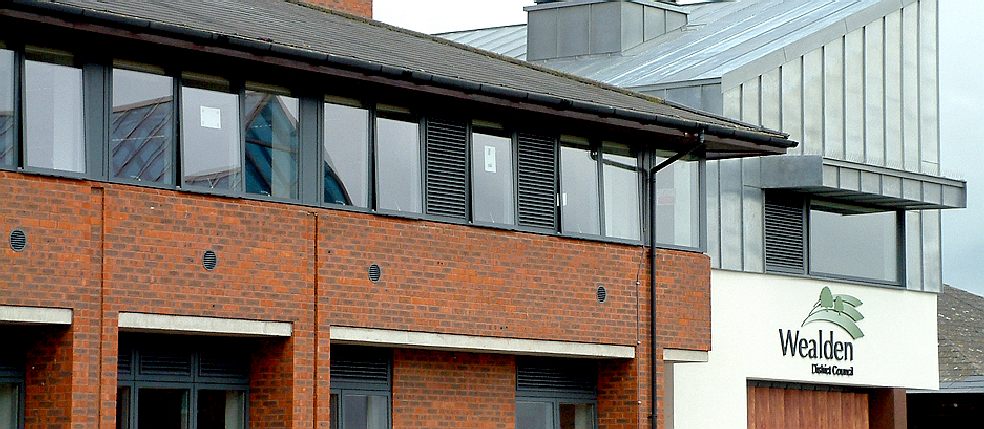
HIVES
OF CORRUPTION -
These are the offices in Hailsham where your taxes
are converted to planning consents for friends of the civil servants who
rule the roost. The Sussex police will never investigate their chums who
are paying for the force to help them do all they can to ruin members of the public who make
waves about the present level of favours for mates that is a crime
according to.
This
is possible because the police forces in Britain are not accountable to
anyone. Ms Katy
Bourne was appointed to change that but appears to have fallen in
with Giles York and his underlings to re-work the system to keep things
as they were. We are sure that Parliament
will not be amused.

























































